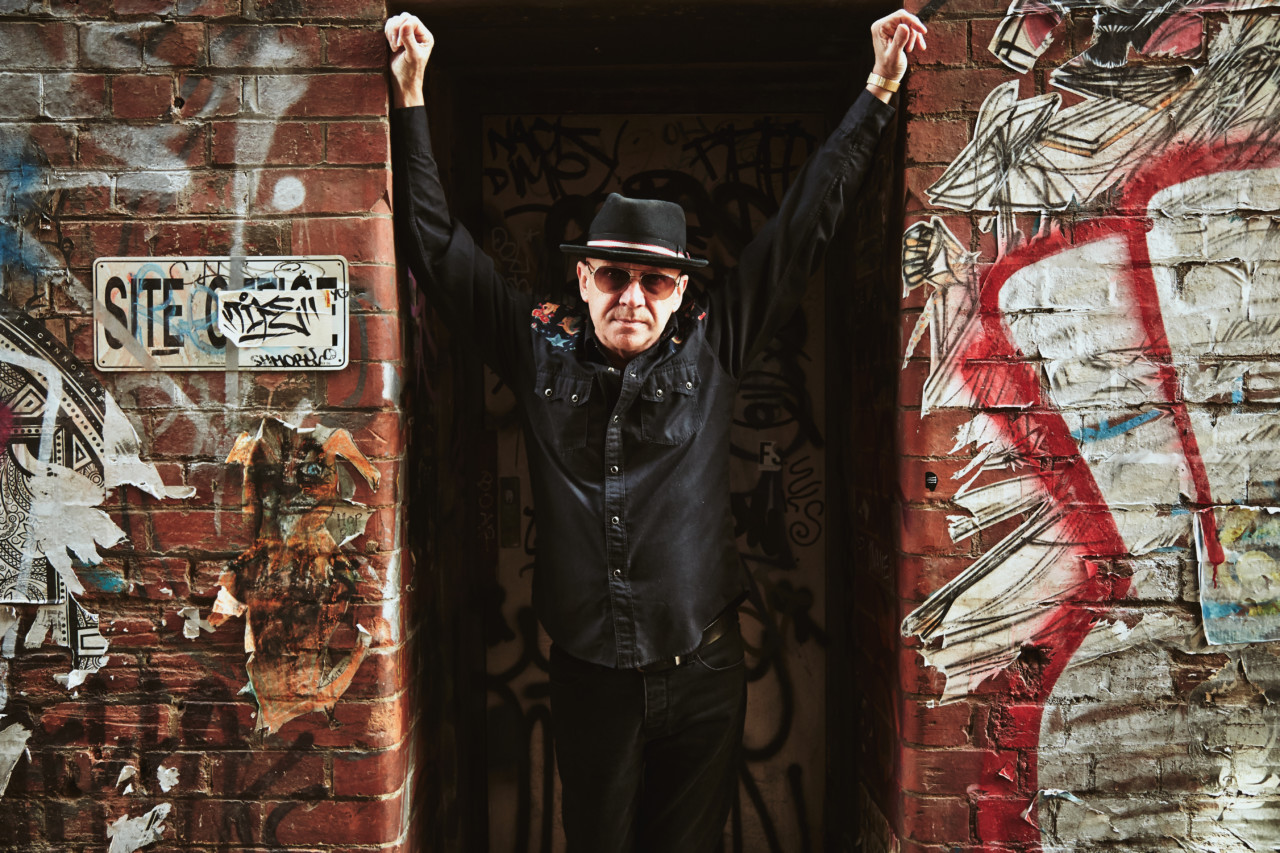Massive success at 21 on the heels of releasing his 1969 psych-rock hit, “The Real Thing,” led Australian artist Russell Morris to pack his bags and head stateside, in the hopes of doubling his luck on American soil. But the market just wasn’t there yet, and he headed back to Melbourne.
Fast forward over four decades, most of them spent purposefully out of the spotlight, and Morris has once again set his sights on his the U.S., this time with his blues album, Sharkmouth. Though the album debuts today in America, it comes with a powerful overseas precedent— it was the highest-selling Australian record in 2013, surpassing platinum sales, and earning him an ARIA Award for Best Blues & Roots Album.
Today, Morris is taking us track by track through the album that was inspired by gangsters, gamblers and thieves. “These stories– some are broad brush stroke, while others are a little more intricate,” he told Elmore. “They are meant to give a thumbnail sketch of life in Australia’s cities and outlying during the Great Depression.” The album is inspired by blues and roots music as well, but don’t expect to hear the same old same old. “I want to be me,” Morris asserts, completely self-assured after a wild ride through the industry. “These are my roots. This is my blues.”
Connect with Morris via his website, and check out our exclusive breakdown of Sharkmouth below.
“Blackdog Blues”
“It’s a song trying to depict the listlessness and desolation that was rife at this time. In broad brush strokes, it tries to capture a rural scene– whereby there’s no work, a broken down, and possibly an abandoned car. Brother in law who is a hinderance; his wife about to have a child– and it’s overdue. Our hero is going through ” the black dog” a phrase coined by Winston Churchill — depression.”
“The Big House”
“During the depression, the banks locked their doors– while thousands of people started to panic, and line up around the block, trying to get their money back- unfortunately to no avail. Some of the more affluent managed to cushion themselves thru this bad time– this is the reference to the “fat cats.” The Big House of course a metaphor for the establishment– banks, stock exchange.”
“The Ballad of Les Darcy”
“Les was an Irish-Australian, and at this time he considered England the enemy, as they were at war with Ireland. A brilliant boxer (world middle weight champion) because he refused to fight under the English flag in WWI, he was black banned from fighting. The ban was mainly led, oddly enough, by the Australian gangsters, who controlled boxing. He decided to take his chances and move to America, to try and organize some fights– however, the long reach of the Australian underworld stopped any chance of him doing so. He died in America, at the age of 21– a tragedy. He is in the American boxing hall of fame.”
“Bout to Break”
“In 1927 there was a struggle on the Victorian docks– between the workers, the unions, verses the dock owners, the government, and the ship owners. During this bloody war– no less than 40 men were murdered, or disappeared. Some of the combatants have gone down in folklore. Billy the Texan Longley, Jack Twist– very violent men.”
“Sharkmouth”
“Being a lover of American blues, I set out to write and record a blues album. However, the songs seemed less than perfect– until I saw a photograph in the paper of Thomas Archer (Sharkmouth), and it virtually spoke to me. Telling me to write about the roots and blues that I grew up with– the streets of my own heritage. So, it was that this journey began. Sharkmouth was a gangster from 1916— during the time of the infamous razor gangs. They would strike fear into the hearts of the “God fearing.””
“Walk My Blues”
“In Australia, during the Great Depression, many men took to the road in search of work– they were known as Swaggies– due to the rolled up sleeping blanket carried on their shoulders. They traveled the length and breadth of the country in search of work— walking miles and miles. This about one such individual, who walks to shed the blues.”
“The Drifter”
“During this time a lot of the cities were partly controlled by gangsters– they had a large number of illegal gaming houses. Whether it’s legend or myth– along came a drifter, who reputedly took a lot of them down for big money, obviously not great choice of action. The Drifter was then said to disappear– whether it was of his own volition– or he was made to, is unclear. However, the rumors persisted, and he was said to be seen, in other cities– usually in mysterious circumstances.”
“Squizzy”
“Joseph Lesley Taylor- a nasty little gangster- standing about 5’3”, was quite vicious, and was surrounded by some nasty types. I wrote the song about him, because I grew up in the streets where he made his name. My grandmother would see him standing on the corner of the Main Street with his gang– she said he was a bit of a dandy – i.e. flashy dresser. He died in a gunfight with one Snowy Cutmore.”
“The Bridge”
“About the building of, and the streets of Sydney at that time. Which incidentally were run by the Squeezer and his Squaw— as they were referred to in the newspapers at that time– both gangsters, of course. This is about one of their enforcers, he dreams of a simpler life- one free of their influence. At this time- to get to the other side of Sydney harbor– one had to take a ferry. The bridge wasn’t finished.”
“Money Don’t Grow On Trees”
“The depression, money was at a premium– try desperately to get some– obviously why so much crime flourished– our hero just wants enough for shoes, or a fancy dress for his love. Frustrated, he decides to join the army to at least get some pay.”
“Big Red”
“Australia’s most famous racehorse- won nearly everything it entered. His embalmed body is in the museum of my hometown. Thousands upon thousands would flock to the racecourses to see him run— during the Great Depression he was the people’s hero. He went to race in America, and while there unfortunately died. At first everyone screamed”foul play,” however it may have been a miscalculation by his trainer– during that time a small amount of arsenic was added to equine chaff– it seems he added too much.”
“Mr. Eternity”
“This man was an enigma– he would wander the streets between 1am and 5am— no one knew who he was for years. He would take chalk with him, and write on the pavement — in the most beautiful script– the word Eternity. People would arise to greet the day, head off to work school, or shopping. There on the pavement would be his beautiful work for all to see. He became a mystery, until someone saw him and snapped his photo. Arthur Stace was his name.”








Be the first to comment!